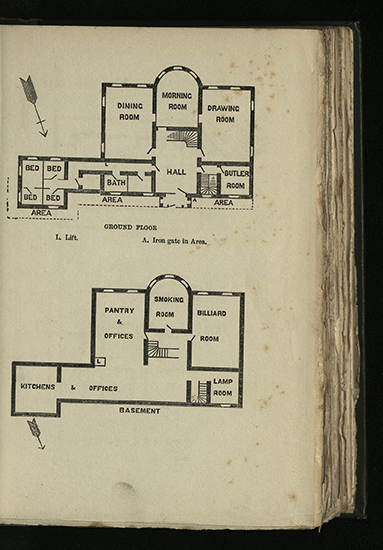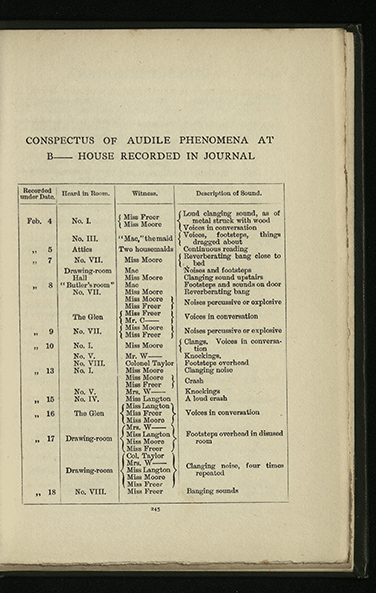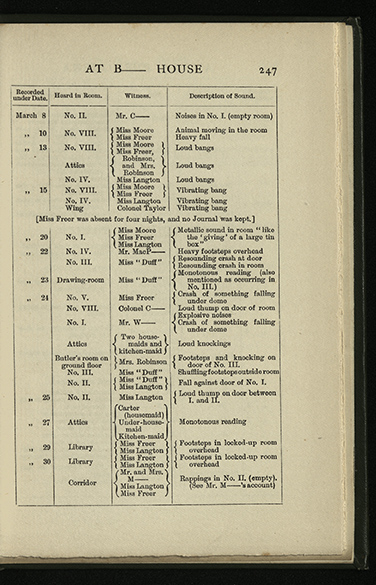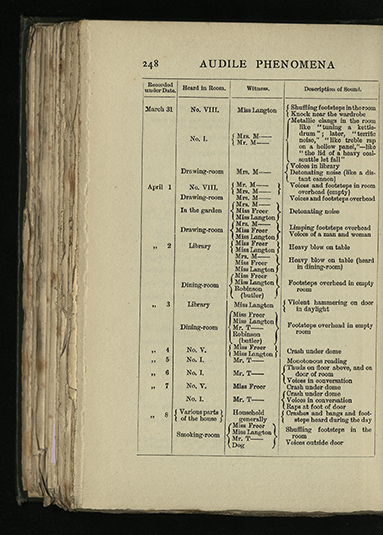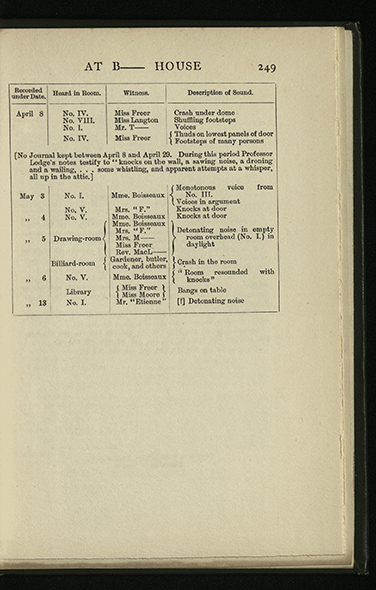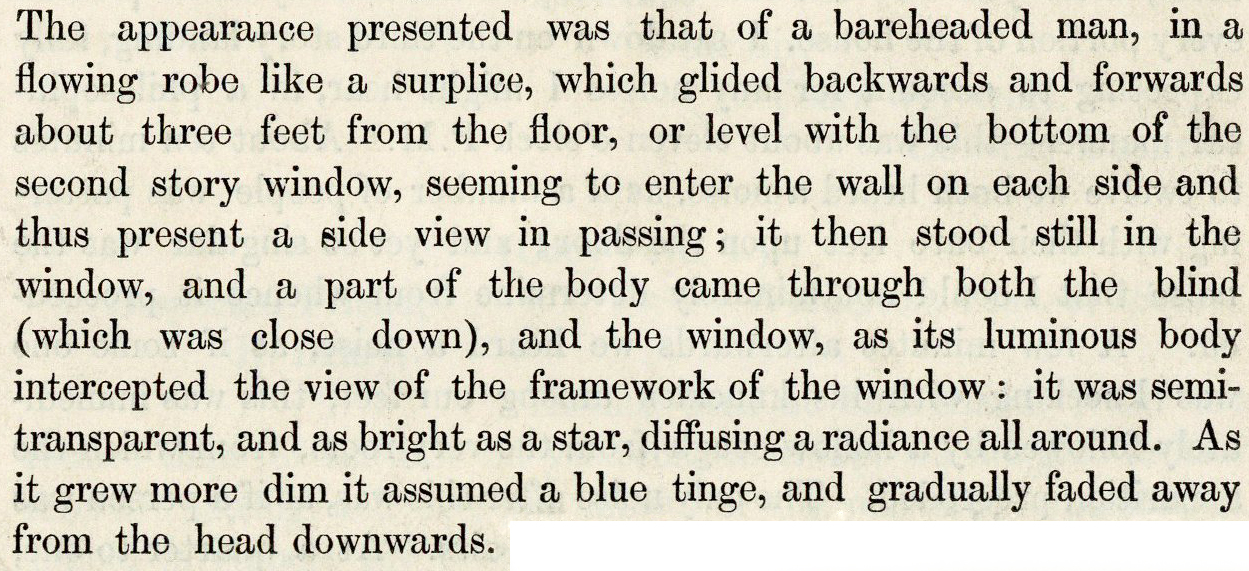It wouldn’t be Halloween without a ghost story, and this month’s treasure provides just that. The Alleged Haunting of B— House was published in 1899 and compiles first-hand accounts of events perceived by guests, staff and tenants at Ballechin House, Perthshire, in the 1890s.

In 1892 Ballechin came to the attention of The Marquess of Bute via a priest who had experienced sleepless nights there, having been disturbed by unexplained noises. Bute had an interest in the occult and was part of the Society for Psychical Research (S.P.R.). Five years later, Bute leased Ballechin to enable members of the Society and selected guests to visit as part of an investigation to record any perceived phenomena for a sustained period. Ada Goodrich Freer, another member of the S.P.R., arrived at Ballechin with a friend on the 2nd of February 1897. She and other visitors maintained journals and wrote letters during their stay. These first-hand accounts, made between February and May 1897, along with reflections from the editors (Freer and Bute), make up the core of the book.
The book relates sounds, visions and other occurrences experienced by occupants of Ballechin during the tenancy. The visitors engage in hypnotisms, Ouija Boards, crystal gazing and automatic writing. An appendix records nearly 100 ‘audible phenoma (see images below)’, including shrieks, groans, crashes and (less traditionally scary) ‘monotonous reading’. As editors, Freer and Bute stated that they offered ‘no conclusions. This volume has been put together, as the house at B—was taken, not for the establishment of theories, but for the record of facts’.
Shortly after the end of the tenancy, on June 8th, an article entitled On the Trail of a Ghost appeared in The Times. Written by a visitor to Ballechin, it damned the investigation, insisting that any phenomena were either noises from the plumbing or created by other inhabitants. He particularly criticizes Freer, stating that ‘simply because she is a lady, and because she had her duties as hostess to attend to, she is unfit to carry out the actual work of investigating the phenomena in question.’ The author continues to denounce the S.P.R.s methods more generally as ‘extremely repulsive’, reliant on ‘gossip’ as evidence and of ‘degrading beings whom it calls “sensitives and mediums”.

Freer was disowned by the S.P.R following publication of this article. Frederic W H Myers, one of the founding members of the S.P.R. had also visited Ballechin during the investigations and ‘decided that there was no such evidence as could justify us in giving the results of the inquiry a place in our Proceedings’. Two years later, Freer and Bute still published this account of occurrences at Ballechin, including Myers’ statement in the opening pages. In the copy of the book held by Newcastle University, someone has added the name of Ballechin to the title page in pencil.
The Alleged Haunting of B– House is part of a collection created by neurologist and medical historian Edwin Clarke (1919-1996). Clarke’s collections reflect his varied interests and include books on medical history and North East England, as well as antiquarian material. This volume is from the Clarke (Edwin) Miscellaneous Collection, which brings together publications on the occult, ritual and folklore. Most of the books date from the 19th to the mid 20th Century. You can browse all of the books in the Clarke (Edwin) Miscellaneous Collection on Library Search.


